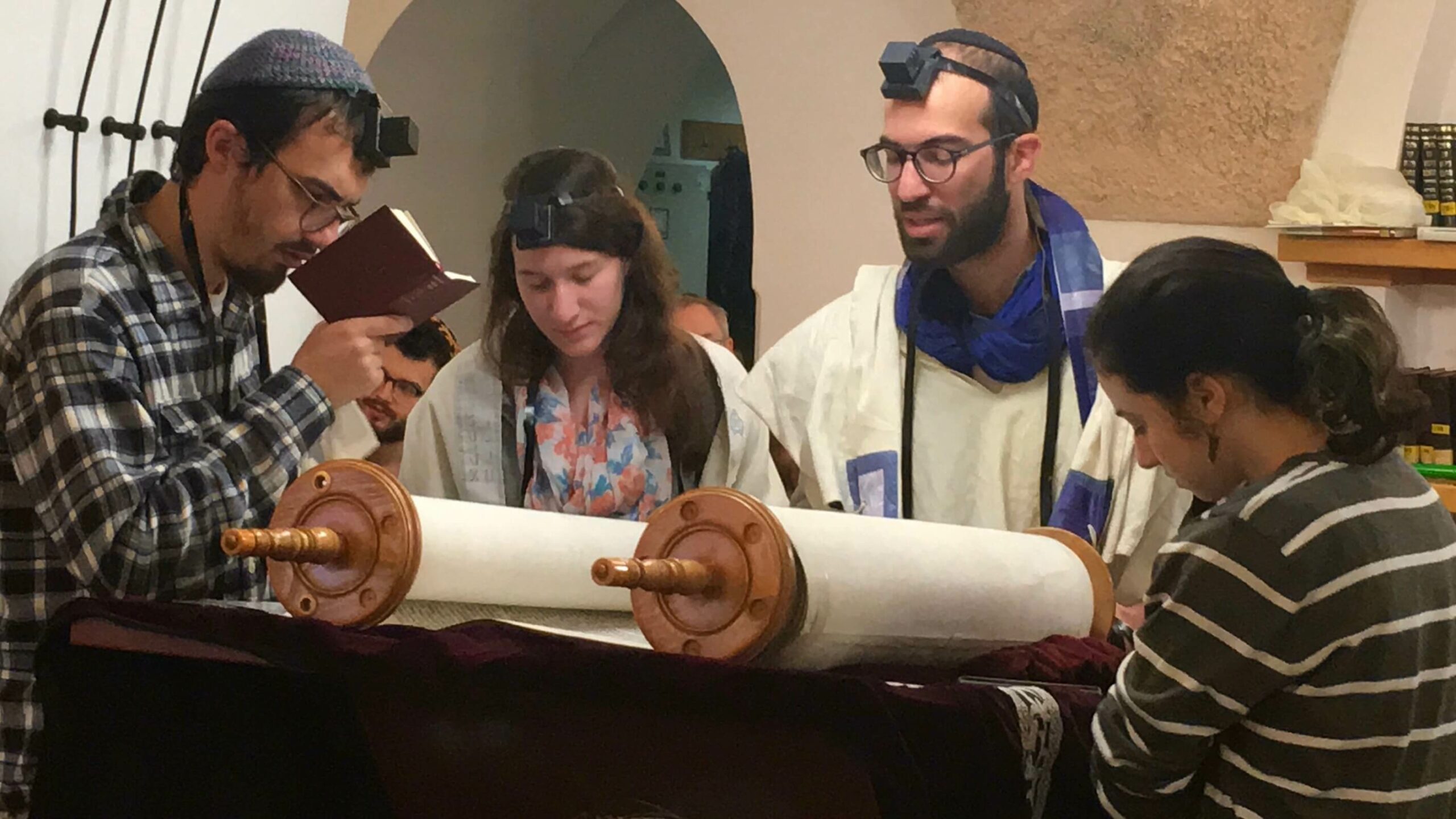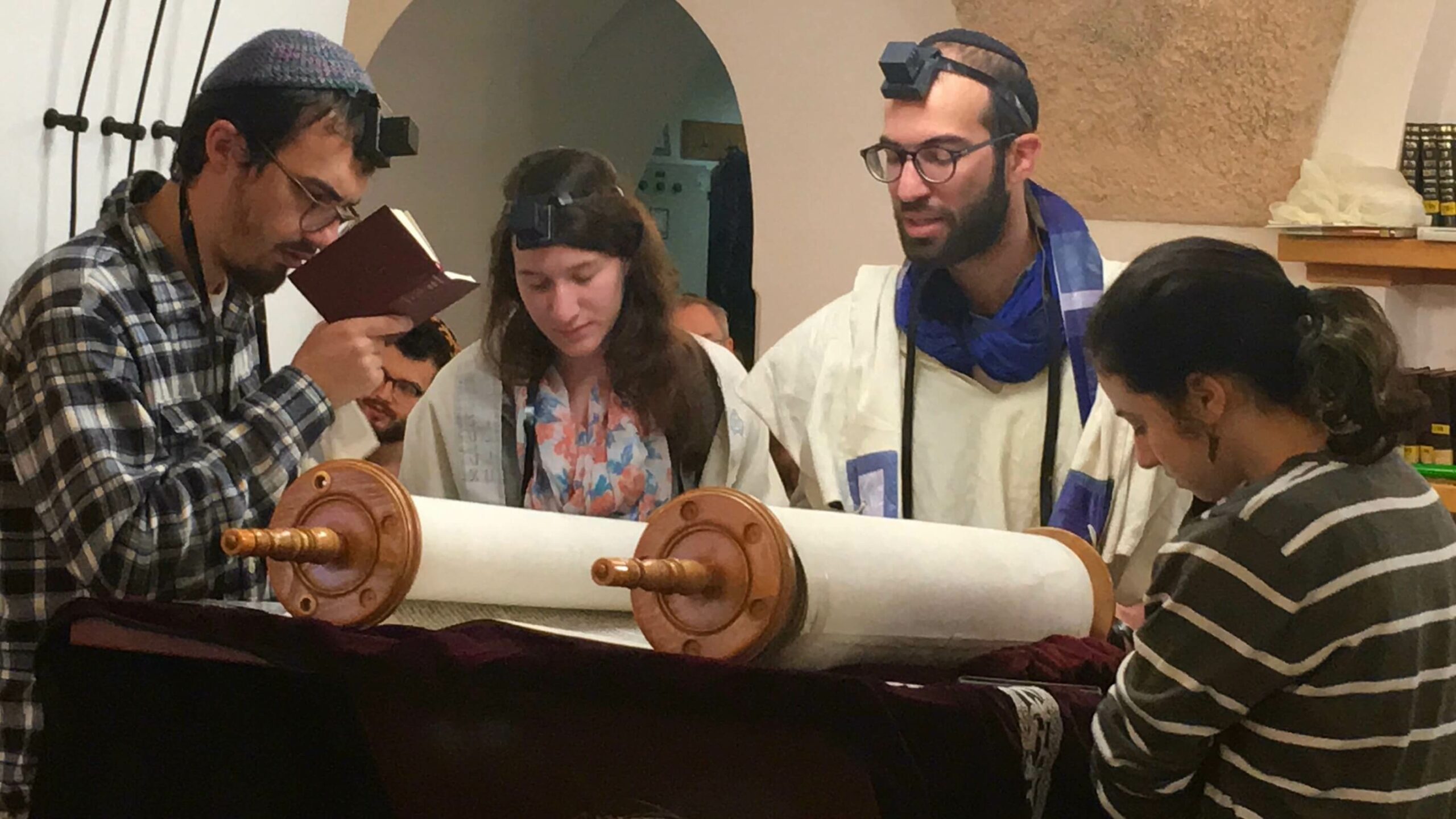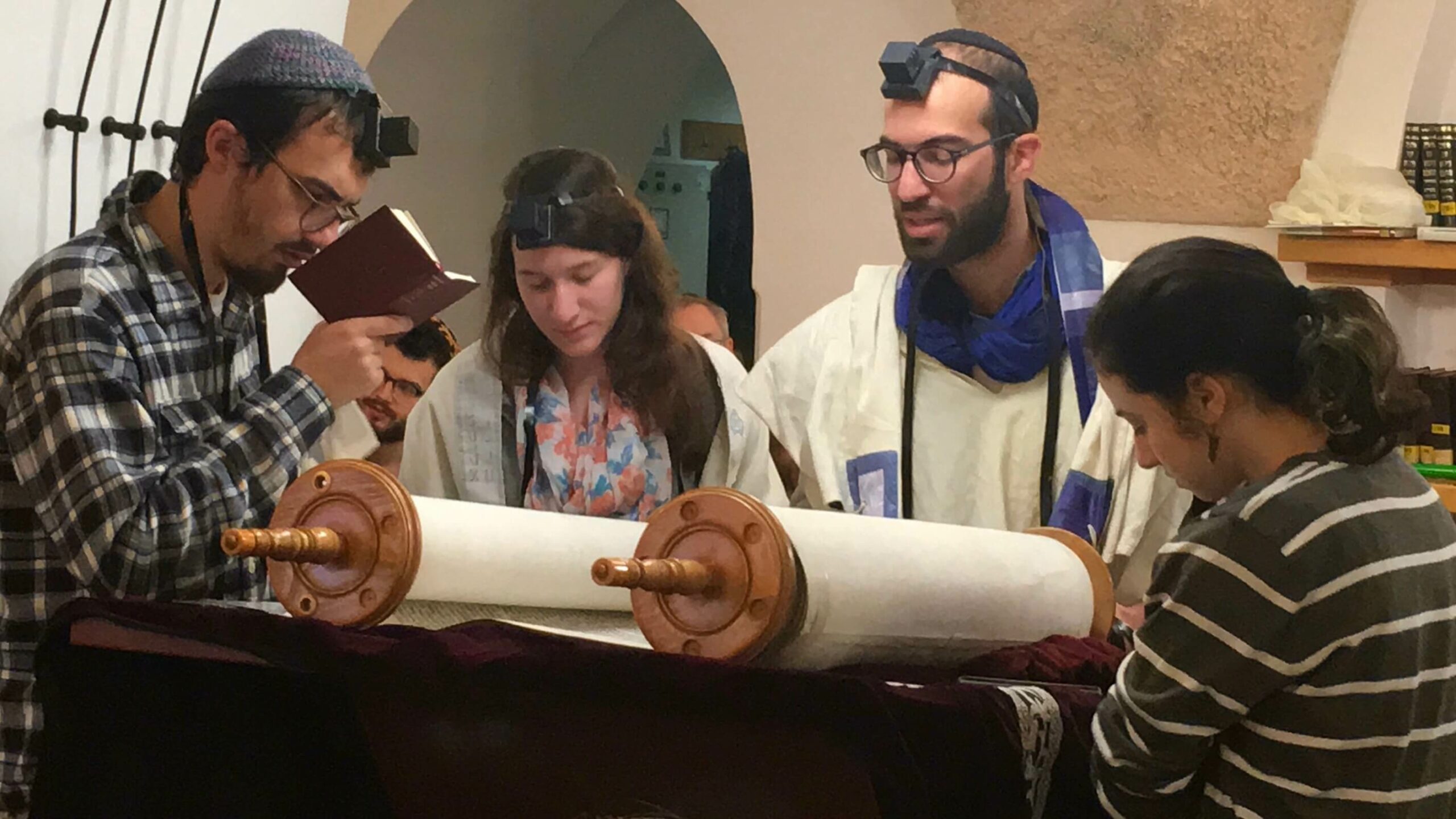

TORAH SPARKS (print friendly version)
D’var Torah: Between Sickness & Disease
Anthony Lazarus, Leo Baeck College Rabbinical Student & CY Alumni
In the last parashah, we learned which animals are permitted to eat, which are forbidden, and which can transmit tum’ah – ritual impurity. But in this week’s parashah the human body itself is the source of tum’ah – in chapter 12, childbirth, and in chapter 13, a “scaly affection of the skin.” These are not just maladies to be treated and healed within the bosom of one’s family or community; they require being distanced, both from the Sanctuary and other Israelites, for an extended period of time. Rather than induce care and concern, they induced fear and revulsion.
Our parashah derives its name from an apparently superfluous term in the second verse: “ki tazria v’yaldah, if a woman conceives and births [a child].” The gemara (Niddah 28b) teaches that the word, “tazria / conceive,” comes to include the woman who is pregnant but does not carry to term. Thus the tuma’ah here is connected to the blood and guts of childbirth – not the new life it enables. Things that are supposed to be inside the body have suddenly come out, and now the woman is untouchable for 40 days (or longer).
The second half of the parashah focuses on the skin ailment, Tzara’at. Here unlike other illnesses that just eat away at one’s insides, Tzara’at slowly eats away at one’s outsides. The sages, though, were not content to just regard this as a dermatological condition. They understood Tzara’at as the outward manifestation of the sin of lashon harah – evil speech. Perhaps here too something that should be kept inside has come out, in all its horrific messiness, and the person must be isolated for a week or more depending on the continued spread of the affection.
Dr. Rachel Adler asks us to read these and other ancient Jewish stigma rituals in the light of the modern mythologizing of diseases such as cancer. Christopher Hitchens, soon before his death from oesophageal cancer in 2010, gave a wide-ranging interview in which he reflected on the public’s imaginative detachment of a mythological, capital-C Cancer from the actualities of physical little-c cancer. He writes:
‘I think it’s a superstition. One among many. […When] I was a child we were all frightened by polio. It takes an effort to remember that now, but in many countries people still are. Previous generations, it would have been smallpox. The heart that never gets the right rhythm. Bronchitis. TB. All these things. But none of them have the same, I think, horror as cancer has been allowed to acquire. And I think it’s probably because of the idea of there being a live thing inside you. A sort of malignant alien that can’t outlive you but that does in a sense have a purpose to its life which is to kill you and then die. It’s like an obscene parody of being pregnant.’
Sickness is not the same as disease. When we are sick, our bodies are fundamentally undermined, but when we are diseased, our body has turned against us, making us grotesque and alien. Disfigurement can do the same. Tuma’ah – weakly translated as ‘impurity’ – exists within the semantic fields of sickness and disease, but is far more like the latter.
It is difficult to feel a great attachment to Parashat Tazria, especially without being able to fully understand or identify with the stigmatization of birth, menstruation, or skin ailments. But while we might read this and other sections of VaYikra with smugness, reflecting on our society’s comparative civility, I am not sure that Tazria is an appropriate site for self-satisfaction. I have to overcome a bar of inner-resistance every time I visit my dementia-ridden grandmother. Numerous cancer sufferers describe, in various terms, the veil of disease which interposes between the sick and the well in every manner of conversation. We should recollect that both the woman who conceives and births, and the victim of Tzara’at, at least had their rituals, be they howsoever primitive, by which to rejoin the realm of the living.
Parashat Tazria Self-Study
Vered Hollander-Goldfarb, Conservative Yeshiva Faculty
After the painful event of the death of 2 of Aaron’s sons during the celebrations for inaugurating the Priesthood, we are taking a 2-week break from Tabernacle business and learning a bit about some purity issues. It is important to remember that it has nothing to do with hygiene. Over the next parashot, we will try to understand what it might be about.
1) We open (12:1-5) with the situation of a woman who gave birth and therefore became impure. Next week (in chapter 15) we will learn about the impurities of bodily discharges. Why do you think that the case of a woman who gave birth is not included in the section on other bodily discharges?
2) The birthing woman is counting the days of her impurity; for the birth of a girl, it is double as long as for the birth of a boy (12:1-5). What might be the reason for this?
3) In the decision of whether or not a person has Tzara’at (often translated ‘leprosy’) the verb ‘to ‘see’ appears many times (chapter 13). What does it tell us about the nature of the test needed for diagnosis? What might it tell us about Tzara’at?
4) If a person has a skin blemish that might be suspected of being Tzara’at he is “brought to the Kohen” (13:2). Why do you think the person needs to be brought to the Kohen rather than go at his own initiative?
5) Part of the diagnosis of Tzara’at in certain situations involves a 7 day waiting period to see how things develop. During that time the person is not declared impure. What does this tell us about the nature of Tzara’at as a physical ailment?
D’var Haftarah: Don’t Make Life a Shortcut
Rabbi Mordechai Silverstein, Conservative Yeshiva Faculty
This Shabbat is a liturgical extravaganza. We read from three Sifrei Torah: the first six aliyot go to Parashat Tazria, the seventh aliyah to the special Torah reading for Shabbat Rosh Hodesh and finally, the maftir or last aliyah for Shabbat HaHodesh, a special reading associated with the upcoming holiday of Pesach. The haftarah reading from Ezekiel speaks of the special organization of the future Temple for Shabbat and the festivals (including Pesach), including the pedestrian pilgrimage visiting patterns to the Temple on festivals: “But on the fixed occasions, when the common people come before the Lord, whoever enters through the north gate to bow low shall leave by way of the south gate; and whoever enters by the south gate shall leave by the north gate They shall not go back through the gate that they came in, but should go out through the opposite gate.” (36:9)
Ezekiel’s innovation seems intended to regulate traffic in the Temple to prevent congestion. Commentators, however, wanted to mine a more significant message from this seemingly innocuous regulation. For instance, Rabbi Eliezer of Beaugency (12th century France) thought its intention was to ensure that no one would turn their back to the sanctuary.
In the Talmud, this verse served as proof in the discussion of a similar regulation regarding behavior in a synagogue. The Mishnah (Berachot 9:2) ruled that one should not make the Temple Mount a “kappandaria,” leaving this Greek loan word undefined. (In Mishnaic times, people probably knew the meaning.) The following discussion ensued in the Talmud: “What is the meaning of kappandaria? Rava said: A short cut, as its name implies… Rav Nahman said in the name of Rabbah: If one enters a synagogue not intending to use it as a shortcut, he may use it as a shortcut. Rabbi Abahu said: If there was a path there originally, it is permitted. Rabbi Helbo said in the name of Rav Huna: If one entered a synagogue to pray, he is permitted (mutar) to use it as a shortcut, as it says: ‘but on the fixed occasions, when the common people come before the Lord, whoever enters through the north gate to bow low shall leave by way of the south gate, etc.]’.” (Berachot 62b)
It is not immediately clear how this verse proves Rav Huna’s statement. If the verse is intended to create an environment of respect for God and His “home” by asserting an obligation to walk from one end of the “house” to the other then why should it be just permitted and not obligated to do the same in a synagogue? In fact, there are versions of the Talmud which read “obligated” (hayav) in place of just “permitted”. (See Rabbi Yitzhak Alfasi)
Seeing the synagogue as a place where one shares one’s love and respect for God and Judaism and not just a short cut where one seeks to “short change God” captures the sense of what the Sages culled from this verse. With this attitude in mind, both God and His worshipers come out ahead.








